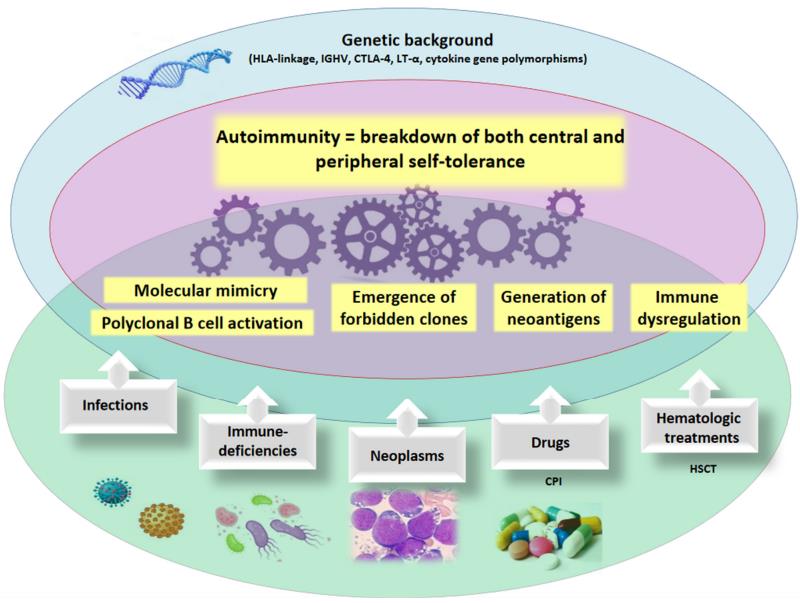NAA Associated Thalassemia
The association between thalassemia and the presence of natural autoantibodies (NAA or NAbs) has generated great interests in the last few years. Creative Biolabs is a world’s leading NAA services provider for NAA-targets interaction analysis. Our expert team offers the most professional solutions and the advanced technologies which will ensure the progress of our customers’ research. Our expertise including but not limited to identifying, analyzing, and validating the new NAA biomarker for thalassemia, as well as the discovery of a novel drug target.
Introduction of Thalassemia
Thalassemia is a kind of inherited blood disorder characterized by abnormal hemoglobin production. Anemia symptoms include feeling tired and pale skin, bone problems, an enlarged spleen, yellowish skin, and dark urine. In children, slow growth may occur due to thalassemia.
Thalassemia has two main types, alpha thalassemia and beta thalassemia. Four genes for alpha globin or two genes for beta-globin missing always result in various degree of alpha and beta thalassemia. Normally, the diagnosis is conducted by blood tests, including a complete blood count, special hemoglobin tests, and genetic tests. It is important to diagnose before birth through prenatal testing.
Treatment of Thalassemia
Treatment for thalassemia disease often includes regular blood transfusions, iron chelation, and folic acid. Iron chelation may be performed with deferoxamine or deferasirox. Sometimes, a bone marrow transplant can be a consideration. However, the complications may include iron overload from the transfusions, heart or liver disease, infections, and osteoporosis. If worst comes to worst, surgical removal may be required because of the spleen becomes overly enlarged.
Both α- and β-thalassemia can be inherited in an autosomal recessive manner. Rare cases of dominantly inherited α- and β-thalassemia have been reported in an Irish family with two deletions of 4 and 11 bp in exon 3 interrupted by an insertion of 5 bp in the β-globin gene. In general, if both parents carry a hemoglobinopathy trait, the risk can be reached to 25% for each pregnancy.
The NAA Targets Based Thalassemia
The thalassemia disease is always associated with the production of NAA, therefore, the detection and analysis of NAA can be as an indication to promote the diagnosis of thalassemia. In addition, a series of therapeutics based on the NAA can be designed according to the results of NAA detection. To date, there are eight common targets have been recognized in thalassemia disease:
| Natural Autoantibodies Targets in Thalassemia | |||
| Anti-ATP Synthase | Anti-Alloantibody K | Anti-Alloantibody E | Anti-Alloantibody C |
| Anti-Alloantibody JKb | Anti-Alloantibody Cw | Anti-Alloantibody D | Anti-Alloantibody Xg |
NAA Detection Associated with Thalassemia
Increasing evidence indicates a role of NAA in immune regulation. The identification of NAA that bind cytokines or their receptors facilitate the study of autoantibodies transport, circulating half-lives, and functional activities. Natural IgG autoantibodies affect the numbers of pre-B and B cells in bone marrow, suggesting physiological feedback regulation of B-lineage cell, which is a general mechanism of immune homeostasis. IgM-NAA and IgM anti-leukocyte antibodies (IgM-ALA) inhibit autoimmune inflammation by anti-idiotypic mechanisms, enhancing the removal of apoptotic cells, masking neo-antigens, and regulating the function of dendritic cells (DC) and effector cells. Therefore, the NAA detection and analysis are required in medicine development and diseases diagnosis, as well as appropriate therapeutic intervention in autoimmune and malignant diseases.
 Fig.1 Cellular and molecular mechanisms of autoimmunity.1
Fig.1 Cellular and molecular mechanisms of autoimmunity.1
Features of Our Platform
- Excellent platform with state-of-the-art equipment and experienced scientists;
- High-affinity antibodies against various markers;
- High-quality products with reasonable price.
With well-established NAA detection and analysis platforms, our experienced scientists at Creative Biolabs is dedicated to helping you analyze NAA using various customized immunochemical detection methods such as western blotting, ELISA and high throughput methods in a timely and cost-effective manner. Our high-quality products and services will contribute greatly to the success of your projects. Please feel free to contact us for more information and a detailed quote.
Reference
- Barcellini, Wilma, Juri Alessandro Giannotta, and Bruno Fattizzo. "Autoimmune complications in hematologic neoplasms." Cancers 13.7 (2021): 1532.
Choosing natural autoantibody (NAA) microarray to profile autoantibody repertoire and reveal novel disease's marker.
- NAA Services for Anti-Alloantibody Xg
- NAA Services for Anti-K Antibody
- NAA Services for Anti-E Antibody
- NAA Services for Anti-C Antibody
- NAA Services for Anti-JKᵇ
- NAA Services for Anti-Alloantibody Cᵂ
- NAA Services for Anti-Alloantibody D

